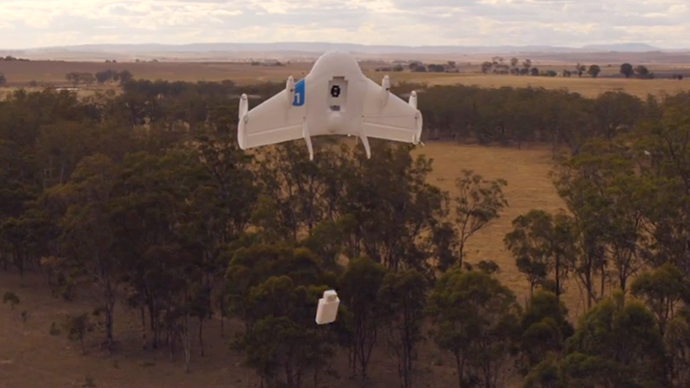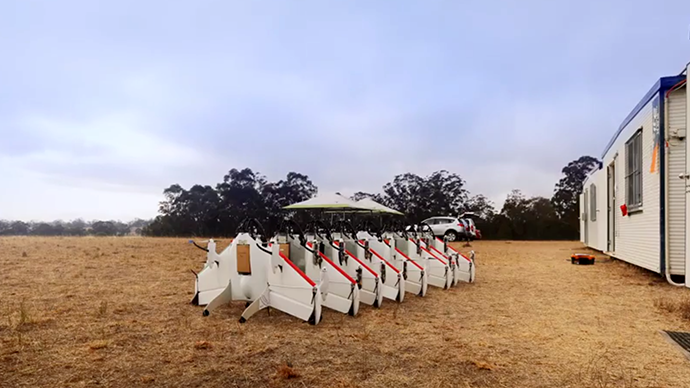‘Project Wing’: Google tests drone deliveries in outback Australia

A remote part of the Australian state of Queensland has been chosen by Google’s clandestine research facility for testing the company’s future drone delivery fleet. The system has tremendous potential to transport goods more quickly, Google[x] claims.
In an operation dubbed ‘Project Wing’, two Australian farmers have been lucky to become first Google[x] clients to get a first aid kit, candy bars, dog treats and water delivered by drones in a test mode. The company reported of at least 30 successful deliveries made so far.
Google[x] is the company’s ‘secret’ research facility, operating independently close to the main Google headquarters. The laboratory’s activities are directed by scientist and entrepreneur Astro Teller, while Sergey Brin, one of Google's co-founders, is overseeing the operations.
Google’s researchers are honestly saying that drone delivery system is on a very early stage of development, “years from a product,” but the future of this technology promises to be very bright.
The first tests of Project Wing prototypes have shown that “hard work over the last two years has resulted in a reliable system that can do an autonomous delivery,” said Project Wing founder Nicholas Roy.
Google drones are using the convertoplane principle: vertical takeoff and landing while flying in an ordinary propeller-driven aircraft mode.
A peculiar characteristic of a Google drone is that it does not land to get a parcel delivered, nor does it drop it from a height. To relieve itself of its ‘burden’, the drone hovers in place and gets the parcel down gently using an electrical drum hoist. This is obviously for not getting some fragile goods like an electronic device to get broken in the delivery process.
“Throughout history there have been a series of innovations that have each taken a huge chunk out of the friction of moving things around. Project Wing aspires to take another big Chunk of the remaining friction out of moving things around in the world,” said Astro Teller, Captain of Moonshots at Google[x]. “Working together we can get to this future I think surprisingly quickly.”
In any case, the future seems to be around the corner: the Google[x] drones are already flying and they land their cargo on the front lawn of the desired house.

“The next phase is to take the momentum and the enthusiasm that we’ve built internally and now drive it towards enabling the dream of delivering stuff more quickly with proper and due safety,” said Dave Vos, Project Wing Lead.
Google’s major drone delivery rival, Amazon, is currently trying to obtain permission from US Department of Transportation to carry out outdoor tests in the US.
Amazon’s Prime Air initiative envisages the use of unmanned systems capable of carrying small payloads over short distances. Just like Google’s Project Wing, the tests of Amazon’s drones are currently taking place only in indoor facilities or abroad.
Apart from obtaining permission to perform flight delivery tests, which would otherwise be considered illegal violation of airspace in most countries, drone delivery has some obvious disadvantages.
A weight limit for goods delivered is not a big problem, believes Amazon, which hopes that the drones will be able to carry loads of several kilos – such products are 86 percent of Amazon’s total deliveries.
But how to deliver goods by air to customers that live in multistory apartment buildings is an open question.
Also, high-density air traffic of delivery and other types of drones could pose a real safety problem for cities in the future, which would imply either creation of computer centers monitoring ‘drone traffic’ to prevent their collision in the air, or limitation of drone use to the suburbs and countryside only, where there would be enough space for any number of flying vehicles.














